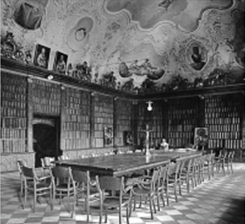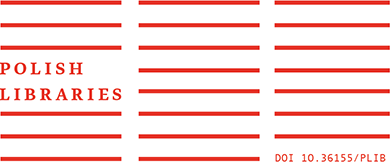ALL ISSUES

CREDITS, p. 2
ARTICLES
Library Data Visibility and Re-use: Possibilities Emerging from the National Library Descriptors Project, p. 6–39
This paper has provided an explanation of how the National Library Descriptors project supports the simplicity, interoperability and Semantic Web compatibility of the National Library’s metadata. It has presented how the project, which initially aimed first and foremost at providing better data access by creating additional access points within the original National Library dataset of the Bibliographic Database, might also provide further advantages in combining the National Library dataset with other datasets available on the Web, as they can be relatively easily mapped to properties and classes defined in commonly used Semantic Web ontologies, and facilitate further advancements such as enabling the semantic search within the National Library’s catalogue or facilitating the application of the Named Entity Recognition and Resolution techniques to the digitised context of National Digital Library.
The success of the Semantic Web will be significantly limited if content and tools are not widely shared. Much as the original World Wide Web grew from an open-source, open-content model, so must also the Semantic Web.
We are currently witnessing the implementation of a monumental infrastructure project, which in some ways echoes breakthrough projects of the past, such as the construction of the Roman aqueducts or the creation of the “Encyclopédie” during the Enlightenment period.
The National Library Descriptors project is an attempt to provide significant input into this movement that will change the way we perceive, consume, and interact with the world of data.Reading Satisfaction: Implications of Research on Adolescents’Reading Habits and Attitudes, p. 40–64
The article analyses the factors shaping the reception of books among adolescents and their expectations towards reading that are conducive to reading engagement. Reading engagement, as understood here, is an intrinsically motivated attitude indicating the intensity of reading practice. This means that an engaged reader is someone who reads books frequently and systematically, with pleasure, believing this practice to be valuable and appealing. The teenage reader’s horizon of expectations has been described on the basis of values and attributes associated with enjoyable reading. This description helps to discover certain consistencies related to the circumstances in which young readers find satisfaction in reading as well as the modalities of reading they believe to be valuable.
The analyses of values and characteristics pertaining to highly esteemed books presented in the article formed part of the nationwide adolescents readership survey results. These analyses demonstrate consistencies in interpreting literature by adolescent readers - three basic ways of using a literary text: the first is an escapist, recreational approach; the second one consists in looking for ethical values and a moral messages, and the third way is related to its cognitive function and to looking for a representation of the real world. Additionally, based on three editions (2003, 2010, 2013) of nationwide adolescent readership surveys, this article presents the social and demographic conditions for becoming an engaged reader, i.e. someone who is an active reader making their own choices, without contesting the viability of required reading, with a positive attitude towards books, and with the competencies necessary for enjoyable reading as well as their own idea of what such reading should be like thus enabling them to indicate books worth reading.Anatol Stern and Stefan Themerson. On Europa and the Friendship Between the Two Avant-garde Artists on the Basis of Their Mutual Correspondence from the Years 1959–1968, p. 65–83
Anatol Stern (1899–1968) was a poet, one of the founders of Polish futurism, a prose and drama writer, literary critic, essayist and the author of memorial sketches as well as a prolific scriptwriter and film journalist of the Polish interwar period. Stefan Themerson (1910–1988) was a novelist, poet, essayist, philosopher, author of children’s literature and composer; together with his wife Franciszka (1907–1988), he made experimental short films in interwar Poland and later in the UK during the war, laying the foundations for the Polish film avant-garde. The article studies the relationship between these two artists, who met each other and began to work together already in the early 1930s, which has not been analysed in detail before. Manuscript sources documenting their friendship before the war have not survived to this day (Europa, an experimental film by Themerson based on Stern’s narrative poetry, has also been lost), therefore, what provides fundamental reference for the article – without being its only source of information – is the correspondence between Stern and Themerson from the years 1959–1968, recently compiled by the National
Library of Poland.Girdle Books and Leather Overcovers in Poland. Relics and Iconographic Sources, p. 84–180
An overview of all works of art in Poland of the late Gothic and Renaissance periods gives us very rich resources to investigate many questions connected with the book of the time. Iconography is a perfect source not only for the bindings as such and their morphology, but also for the aspects of the book’s use by different social groups: how they read them and how they preserved them. These questions are broadly related to the protection of the book and the function and character of the binding itself, adapted to the conditions of its use and storage.
One of the most interesting questions regarding book bindings in the late Middle Ages are the protective structures that are more or less joined with the book. They provide us with an account of the book’s “life story”, which is not always apprehensible to us now. Based on the analysis of the preserved relics of bookbinding and on the iconography we can now distinguish several interrelated types of additional protective structures of the book whose use was not limited to the Middle Ages but also persisted later on.
In Polish book collections a large number of books have been preserved, including mainly missals, in leather overcovers or displaying traces of such. However, iconographic sources show us no more than a few examples of this binding. Based on these we find no direct evidence for the occurrence in Poland of the chemise, the more elegant type of book-protecting, an overcover made of fabric that was widespread among the rich burghers and nobility in the Netherlands, England, France, Spain and Italy.
The fullest representation in the plastic arts in Poland is that of the girdle book. A thorough analysis of the artworks showing such bindings – chiefly in sculpture and, to a lesser extent, panel painting – has enabled us to determine the character and the users of this type of book in Poland. Plastic arts representations originating mainly from the Pomerania, Silesia and Lesser Poland from the period between the first half of the 15th century and the late 16th century show girdle books usually held by the apostles. In Poland, as all over Europe, the most comprehensive group are effigies of St. John the Evangelist, and, less often, of St. James the Greater, St. James the Less and St. Philip. Based on these depictions we are able to determine the main features of the structure and character of girdle books. Most often these are small octavo books with three binds on the spine and with one fastening typical of the period when the depiction was made.
The extension of the material – predominantly light or red – at the tail usually exceeds the height of the book by a bit and is more often left loose than tied in a knot. Among the plastic art representations we find all of the structures of the outer material layer, which in most cases is not additionally fixed using protective bosses or corner and centre pieces. It seems that the lack of metal elements on the covers is quite characteristic of the bindings depicted in Polish art, which might have further contributed to the impermanence of such structures and be one of the reasons why so few leather overcovers have been preserved until now.
Aside from special, relatively durable forms of additional protection form (girdle books), iconography in Poland provides examples of the use of casings, sacks, and caskets for books. It appears that the casing was the oldest and the most universal of these forms, invented in church institutions and the archetype of subsequent forms of additional book protection.
The casing was used not only for the transport of liturgical books, missals, and breviaries, but – as iconographic sources indicate – it was a convenient and common manner of storing books. Apart from casings, the iconographical sources give us examples of caskets that were characteristic of the late Middle Ages and were mostly used for carrying small breviaries or other portable, small-size books attached to the belt. In spite of strong realistic tendencies in the late-Gothic art, these were influenced by iconographical stereotypes and stylistic schemes, relatively independent of the reality. The book box at an apostle’s side was less convincing, symbolically speaking. A book in a normal binding or in form of a pouch held by the saint in hand was above all his attribute and symbol, while the less characteristic box with the book attached to the belt was more or less a merely decorative accessory, not necessarily understandable to a contemporary beholder. In reality, for pragmatic reasons it was simpler to place the necessary volume in a bag or a sack, or even add an additional leather overcover whose considerable extension at the lower edge of the book could be tied in a knot or hooked to the belt, than to make a special casing with an additional fastening. The comparison of the preserved relics of bookbinding with the picture that emerges from the iconographic sources allows us to consider those sources as being generally reliable and fairly precise in illustrating their character. This is confirmed by the comparison of particular elements of the actual book relics with their corresponding depictions. What is more, the information from iconographic sources complements the analysis of the late-mediaeval bindings of manuscripts, as well as Renaissance printed books. The elements we cannot find in the original book binding relics but which we do encounter in the iconography are thus to be regarded as probable and taken into account in attempts at establishing a comprehensive typology thereof.
These findings are particularly useful in studying mediaeval bindings which underwent larger alterations than the accompanying relics. In many Gothic art relics we may often think that the book, as one of the elements of the composition, was depicted ineptly, simplistically, and that its depiction ignores minor details. This conclusion, however, is only partially true. Even less accomplished artists would unintentionally convey the image of the object as rooted in their experience, perpetuated in their memory and idealized, and would recreate what was characteristic and typical of the real object. Thus the apparently simple and austere blocks of the books encountered in Gothic art do reveal the authentic character of the bindings of the period.

